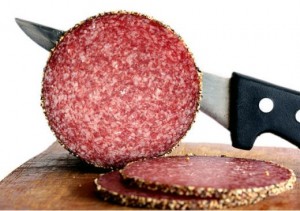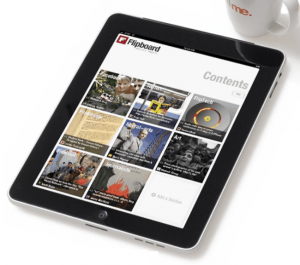Consumers these days get exposed to an average of 3000 to 5000 brand messages a day, in various shapes and forms. They are looking at lots of “screens” containing these, whether a TV, a magazine, an iPad, a mobile phone, a billboard. And guess what, more and more, they are looking at multiple screens at once (sitting in front of the tv while surfing the net on an iPad).
That begs the question: how do consumers cope with all of that? What’s the (psychological) mechanism that prevents us all from going mad in a world of overexposure to information?
Two of those mechanics get more prominent than ever before:
1. AVOIDANCE, i.e. just ignore most of what you see. Are we getting “information blind?” Maybe we are, for our own good.
2. THINSLICING, i.e. quickly scan information to select what is interesting to us, absorbe a bit, and decide whether or not to take it on or move on (all of this in a matter of nano-seconds). It’s about feeling ok to live with a lot of small “slices of information”
Thinslicing in particular is interesting for marketers to take a look at and understand! It’s the ultimate way to manage social media “overflow”, making use of our intuition (whether right or wrong!!). And, there are certain technologies that are jumping on that phenomenon » an app called “Flipboard” (one of my personal favorites) allows you to quickly “flip” through social media information (blog posts, tweets, facebook pages, etc), in a media-consumption-friendly way (it reads like a magazine).
Now, question is: are the slices getting thinner and thinner as media grows and grows? And what will be left over from your message in the end? I see this as a big concern for us marketeers going forward. We’ll have to adapt the information to make sure it is bite-size, and catches the consumer in a split-second! Quite a task.
I see an even a greater risk on the horizon… consumers are learning this new behaviour very very fast. They have to. Soon it will be transferred into (regular/real-life) buying behaviour too, where consumers typically have been very effective in avoidance systems. That is, will consumers “scan” supermarket shelves in a similar way they “scan” their iPad? Will they go through the supermarket half blind, flipping through aisles and products, more than they are already doing today?
What do you do with that? Well, being an integral PART of consumers’ lives, or the conversations they have around their interests, in their world, seems like the only way out. In the end, if you are not the ONE they PREFER, you’ll be thinsliced! Share of mind, more than ever before, will make the difference. BUT – the way in getting that share of mind is what needs to be different than before… real connection, real interest, real engagement with your consumer is what’s going to get you a % of his/her mind.
On top of that, I guess new “rules” for information curation will pop up:
– BE bite size. Short and snappy. Work in “stages” : small drop of information first, more if the consumers want it.
– BE clearer than ever before in what message you want to convey.
– BE simpler, so there is no reason to slice in the first place.








{ 2 comments… read them below or add one }
Hi Kurt,
This is an interesting concept, and one a UK teenager has identified too, and creating a web browsing tool called Summly. It uses an algorithm to simplify the news source and provide a summary version of it.
http://www.bbc.co.uk/news/mobile/technology-16306742
It directly relates to the idea that we are increasingly overloaded with information, I compare it to reading the weekend newspapers. There’s simply too much stuff in them and you have to filter it on interest and requirements.
Still talking about newspapers, albeit in a different way, I think Thinslicing is why newspapers such as the Metro (UK) have done so well, bucking trends in declining circulations by providing quick bite sized chunks of news.
As you touch on, I think this theme potentially also has connotations for how we convey certain advertising messages (Outdoor / Print in particular). Consumers who are used to having the facts delivered concisely will have changing expectations about advertising should look like – more explicit, and perhaps more directional i.e. read this, do this.
Nice article on thinslicing challenges for marketeers. I have taken a look at the subject from a social analytics angle, which might be helpful? ‘The process of social analytics insight: thinslicing vs analysis paralysis’ http://shar.es/h87Kn